It takes two to tango, as the saying goes. This is especially true in business environments like the technology industry, where well-oiled relationships and alliances are critical to getting products and services from point A to point B in an efficient, effective and profitable manner. And while the complicated go-to-market movements of the tech world require effort more akin to a full ballet troupe than a pas de deux, the indirect channel’s primary dance partner remains the technology vendor whose products they resell, promote and build services around each day.
Vendors rely on their channel partners – VARs, solution providers, MSPs, integrators, influencers, referral businesses, etc. Those partners serve as an extension of vendor sales organizations, emissary for their products, and true partner in building profitable enterprises. Today more than ever, that vendor-partner relationship is on equal footing, with partners that once held little leverage now exerting more agency in deciding who they work with, how they work with them, and what type of partnerships they favor and demand.
That last item is the focus of this research brief. Specifically, we examine how vendors today are trying to best meet the changing needs and requirements of today’s channel companies to provide them with the best all-around relationship experience. CompTIA recently recapped the results of quantitative research called Partner Experience Trends 2022. That study data, sampled from 400 US-based IT businesses, reflects attitudes about vendor-partner relationships today from the perspective of the channel, and provides insights into the weight channel firms place on superior partner experience (PX).
This research brief will zero in on the vendor perspective on PX and today’s channel relationships. The brief offers insights from qualitative interviews with several vendor executives at IT industry firms, complemented by additional data findings from the original channel-based research. For purposes of this discussion, the concept of partner experience was defined thusly:
Partner experience reflects the totality of your engagement with a technology vendor, from recruitment and/or search to onboarding to support and ongoing communications/ease of doing business.
For vendors, delivering on partner experience matters because today’s channel firms, as mentioned, have myriad choices of whom to conduct business with and whose products and services to sell and manage. Technology vendors who strip hassle and pain out of the entire partnering process – including all the steps involved in recruitment, onboarding, support and management, compensation, and other pieces of the relationship lifecycle – are burnishing their channel reputation along with their prospects.
Stepping Up to the PX Plate
A few facts to set the table: 35% of channel firms said that they will only work with vendors that offer a seamless partner experience, while the majority (57%) hews close to that high mandate, deeming solid PX important enough that they will accept only slight deficiencies in it even from a vendor partner they are generating revenue from. Just 9% believe PX is a nice-to-have, not need-to-have perk when choosing vendor partners.
And here’s a show-stopping data point: 50% of channel firms dropped a vendor from their business portfolio in the last year due to poor PX practices. That’s right, half.
Vendors aren’t clueless. They know how important PX is to maintaining a healthy and profitable channel – and happy channel partners. The devil, they acknowledge, is in the execution. And execution is complicated in a complex environment.
“Partner experience is more critical now than it’s ever been. And while I might have said that 10 or 15 years ago with the shift to services, today it is even more complicated with multi-cloud environments, online marketplaces, the proliferation
of as-a-service and consumption models that differ for every vendor.”
– Frank Vitagliano, CEO at Global Technology Distribution Council (GTDC)
Vitagliano’s conclusion here is that today’s channel complexity and an explosion of different business models and non-linear routes to market – i.e. no longer the days of purely transactional product sales, which he describes as “almost quaint” – mandates that vendors and distributors worry about partner experience and how they deliver it.
Differing business models have allowed partners to thrive in new and varied ways in the industry but have also thrown a monkey wrench at vendors to try to figure out what aspects of their channel programs, resources, incentives and other engagement mechanisms are relevant. One of the biggest mindset shifts has had to be away from how much a partner is helping a vendor’s bottom line to how successful that partner is as a venture of its own.
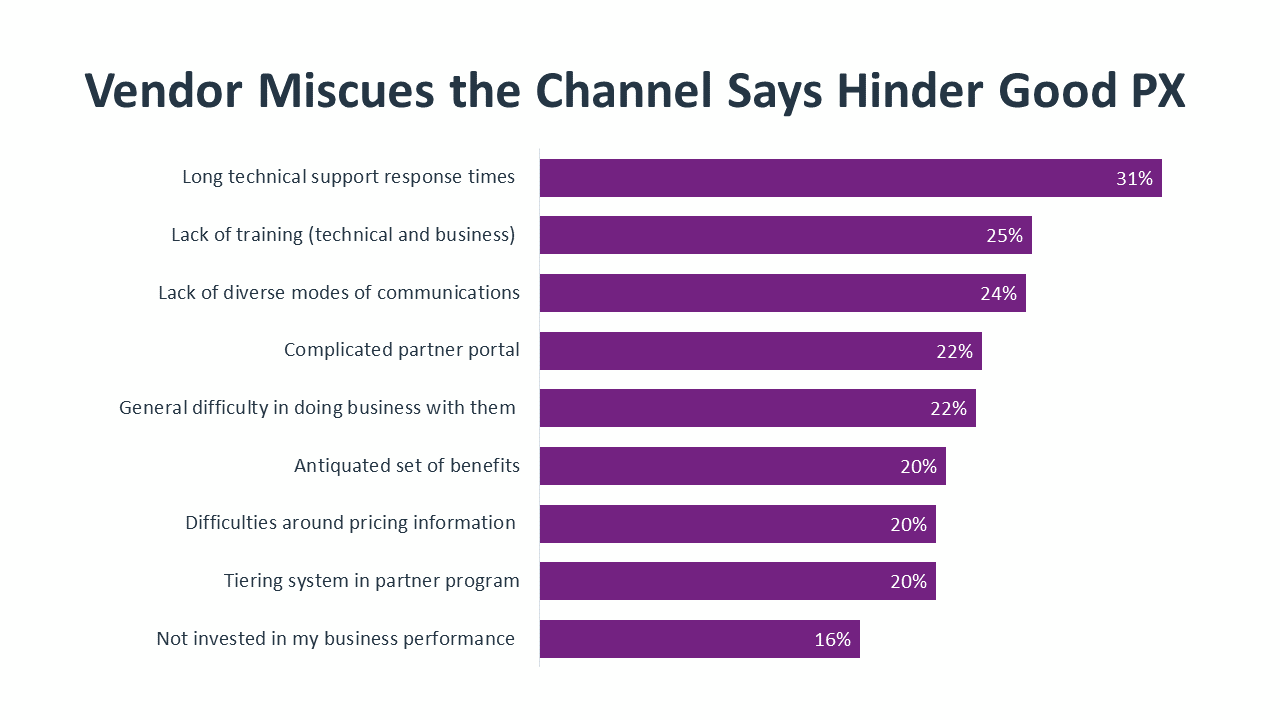
”Why is partner experience changing today? Because [vendors] now have to invest much more in a partner’s growth. Partners are almost becoming a hybrid of direct sales for a vendor. They might be your only source of revenue. So, their growth [and performance] matters a lot.”
– Sean Lardo, chief evangelist, Connectwise
There are still some miles to go before most channel firms believe their vendor partners are both listening to their concerns and heavily invested in the success of their business, based on CompTIA’s research. But very few partners believe vendors are completely disinterested in their goals.

Managing the PX Lifecycle
Much as the average customer does with service companies it uses, channel firms are constantly evaluating the quality of their vendor relationships and the ROI they are getting from them. In the last year, CompTIA research found that 40% of solution providers expanded the number of vendor programs they joined, 16% decreased their participation, and 31% maintained the status quo. Factors contributing to vendor addition and subtraction include the channel’s increased reliance on services dollars for revenue and profit, the desire to align with vendors of newer technologies, and the general shift to the cloud and a subscription, as-a-service business model.
Smart vendors are constantly looking for ways to fuel partner interest and loyalty, boost joint success, and do so in a way that is easy for a partner to do business with them. High bar for sure. And not cheap. Vendors that use an indirect channel as part or the totality of their go-to-market and delivery strategy are allocating upwards of millions of dollars – depending on their size – into activities and resources that support, enable and compensate their partners.
Let’s look at several key areas of the partner experience lifecycle and see what vendor and distributor representatives have to say.
ON RECRUITMENT, ONBOARDING & PROCESS….
“When you onboard a new employee, you put a lot of effort into that person. The channel demands that exact experience. If you don’t onboard [partners] in the same way and get them into production quicky, you lose their interest and could be losing a valuable producer. That’s always been a challenge.”
– Lardo, Connectwise
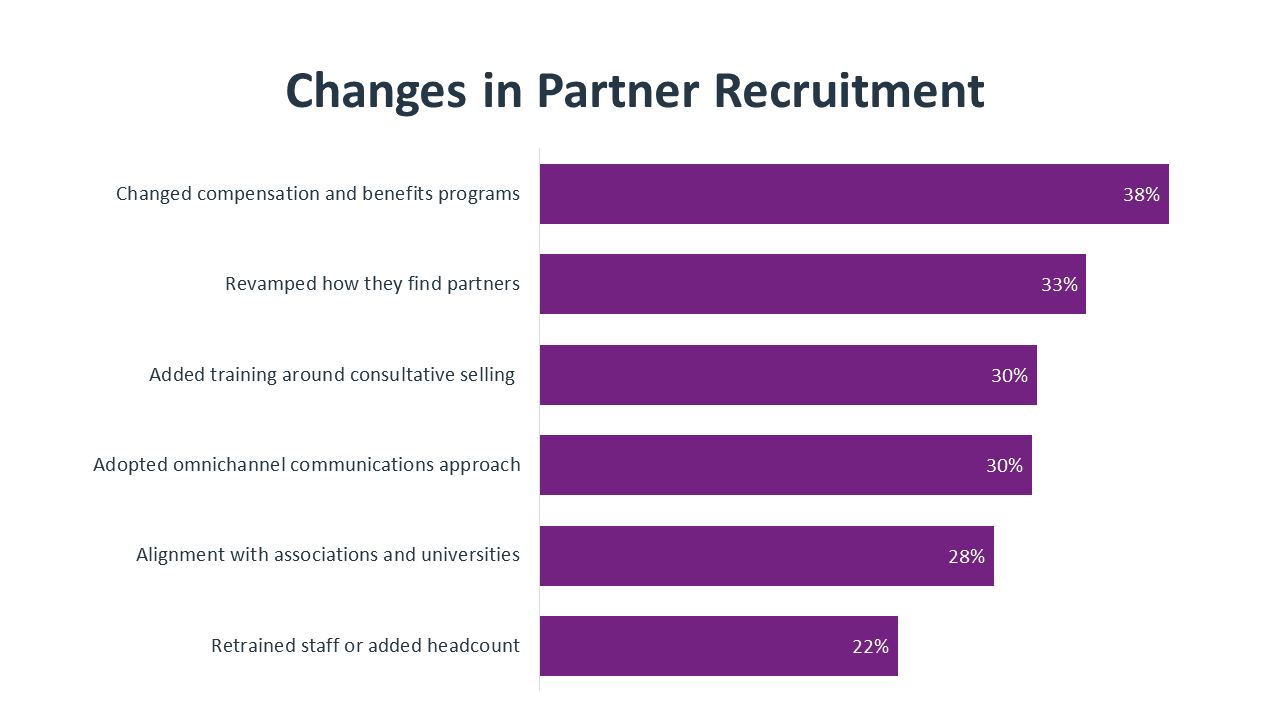
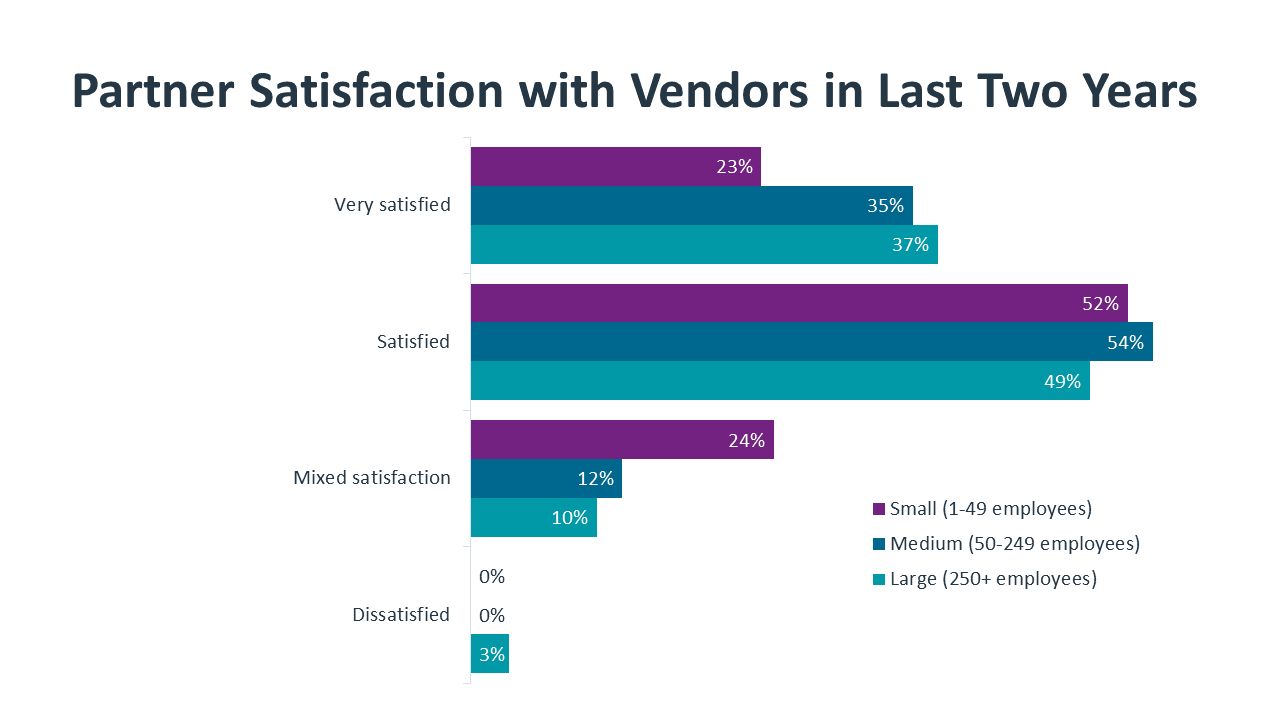
To further cement his point, Lardo used the example of industry events, where partner recruitment takes place at a furious pace on the show floor, after-hours parties, and midday coffee breaks. Almost invariably though, vendor reps return to the office energized, then deflate when their phones aren’t ringing off the hook or their inboxes aren’t filling with potential partner entreaties. The main reason is time. Channel firms are typically very small companies whose people must get back to the core mission the second they return from business travel. Vendors with smart PX on their mind understand this and don’t wait for partners to reach back out. Like recruiters landing the best candidate after a busy job fair, for example, these ahead-of-the-game vendors build follow-up mechanisms into the recruitment process. Proactive next steps give them an advantage in “hiring” ideal partners they meet at an event or via a virtual platform like a webinar. It’s also effective ROI.
Now, to be fair, customized follow-up is hard and not always economically feasible. Customization in general is near- impossible to scale. As a result, vendors told CompTIA that the development of repeatable processes and the use of automation technologies have become indispensable tools for recruitment and onboarding. And, they continued, these tools also play roles across the spectrum of vendor-partner relationship interactions, training and management activities. The operative premise is to have processes in place that smooth the runway for new and existing partners.
But as we’ve learned with many tech solutions, automation isn’t a panacea (especially if it’s glitchy). Both vendors and partners are keenly aware that the personal touch still matters in fostering a healthy working relationship. Partner relationship management software, for example, while often critically useful, can’t be the singular means of interaction. As a result, channel-facing vendors today will tell you that striking the balance between automating for efficiency and ease of doing business while also catering to individual partner needs and goals remains one of their trickiest challenges. One doesn’t replace the other.
“Partners just want to be heard. It’s like if you go to a restaurant and you can see how busy the waiter is, but as long as they come by and touch your table and make eye contact then you know you’re not being ignored. We as vendors can’t say we care [about partners] and then not demonstrate it in our actions.”
– Michelle McBain, Provider Elevate, Leader for the Global Partner Organization MSP at Cisco
McBain, who manages MSP-related channel activities for Cisco, says that the backbone of good partner experience is listening to partner pain points and implementing changes and programs that help drive results and outcomes for those partners. To that end, Cisco, not unlike other vendors in this space, conducts monthly internal meetings to figure out how to best respond to partner pain points with concrete changes. “We work internally and externally on our program improvement plan to ensure that our solutions are driven with the right approach for partners and to help fill in their gaps,” she said.
Here’s a pain point: technical support. Partners do not want long wait times. Amid all the buzz around new business models and new types of resources that partners want from vendors today, expedient tech support remains top of the list when it comes to grading partner experience. Getting that right is critical to helping with partner success, according to Nick Hansen, director of product management at N-Able, which focuses its software on the MSP market.
“You need to put a lot of focus on improving support response times and actual resolution times. But it’s more than just fixing the problem [partners] are having now, but helping them understand why they have that problem and what structural things can be done to eliminate it [in the future].”
– Nick Hansen, Director of Product Management, N-Able
ON COMMUNICATIONS…
McBain’s point about listening is echoed throughout vendor sentiment about getting partner experience right. Frankly, if one thing comes to mind first when you broach the topic of PX, it is communications (often wrapped in a blanket of ease of doing business). Why this is so important is somewhat obvious, but why it is so often cited has everything to do with how scattershot and unpredictable communications have been historically. The quality and effectiveness of how vendors interact with partners can range from truly top notch in nature to just OK to deal-breakingly bad. Partners cite it as one of the critical determining factors of whether a vendor is worth working with or not. It is also one of the areas where some channel firms will tell you they most feel the treatment inequities between “higher-ranking” or “managed” partners in a vendor lineup vs the rank-and-file.
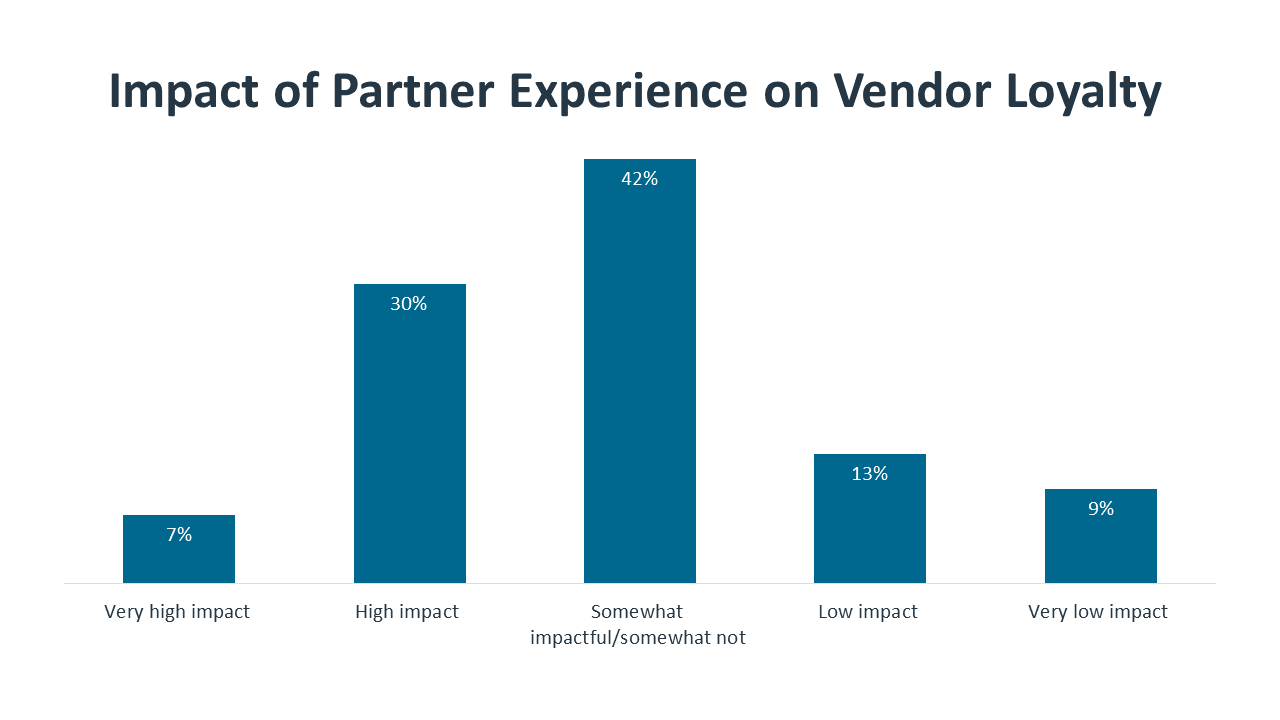
One of the biggest adjustments vendors have had to make when it comes to partner-based communications is keeping up with the myriad ways that today’s workers want to send and receive information. It’s no longer a telephone- and email-based world exclusively, and the explosion of different communications channels – from interactive websites with chat bots and video to webinars and podcasts to gamification and social media – has necessitated that vendors in the channel better understand their partners demographically, by various persona, and by communications preferences. It’s a critical piece to get right, especially if you’re trying to attract new partners or hold onto existing ones. Consider that 35% of channel partners in the CompTIA study said that whether a vendor communicates over a wide range of applications and platforms is one of the questions it wants answered in vetting them to work with.
Changing demographics are a key driver in mixing up the stream of information outlets for delivering everything from product and solution roadmaps to pricing and/or partner program updates to technical support help, business training and other resources, vendors agreed. Some have deployed digital platforms that help partners self-select their communications preferences, identify their areas of focus (i.e. cybersecurity, business applications, infrastructure) and other needs and then map them to the relevant resources available to them.
Vendors interviewed drew the analogy of providing omnichannel communications streams to serve different partner types to the ways in which today’s B2C companies technologically deal with their range of customers. “Most everything we do today in B2C is automated, digital and fast,” McBain offered, suggesting also that channel partners, in turn, need to invest in the same breadth of communications options they receive from vendors for their own end customers downstream.
On Enablement & Training…
The business model marketplace shifts that have occurred in the last 15 years of the so-called cloud era have fundamentally altered the relationship between vendors and partners, and a broad area that’s required the most introspection concerns partner programs, enablement priorities and training. What’s important, what isn’t, and what can partners reasonably keep on top of every month. Consider this for a moment: most channel firms today belong to between five and 15 vendor partner programs. Some even more. That alone is a lot to manage given that program requirements and sets of benefits differ by vendor, and that few, if any, are aggregated into one easy-to-use multi-vendor portal. As a result, partners are taxed trying to stay on top of everything their vendors are doing – or want them to be doing. The inability to manage information can lead to partners losing out on benefits they are entitled to, such as backend rebates or unused MDF dollars. With subscription-based selling models for as-a-service solutions becoming a mainstay for the channel, any abrupt shift in the parameters around monthly pricing per seat or other terms and conditions the vendor puts on these deals can have confusing and debilitating consequences for partners if not rolled out effectively.
And not being able to keep track of everything coming from vendors isn’t just a partner pain point. Yes, some partners fail to maximize revenue and profit by inadvertently – or purposefully – leaving available vendor-provided money or other resources on the table after finding rewards programs too hard to manage. But having overstressed, less-profitable partners isn’t a positive for vendors either. Executives told CompTIA that this type of situation is an example of the vendor-partner terms and conditions never fully settling, mostly based on external market factors and the realities of a fast-moving industry.
“The thing that’s interesting about the topic of PX is that you never solve the equation. Once you think you’ve become easy to do business with, your existing programs and offerings and trainings change. You start over. Partners today are going through an incredible transformation that requires a ton of support on the vendor side and the distribution side.”
– Vitagliano, GTDC
The role of distribution is oft-discussed, especially since the market has shifted away from hardware as the primary transaction to myriad cloud-based solutions and services that can be procured, delivered and managed digitally. This change has blown up the historically linear route to market of vendor-to-distributor-to-partner-to-customer. Today, the provider-to-customer journey for technology goods and services has many more side streets and detours. This has forced distributors that were founded on aggregating and coordinating hardware bundles for reseller partners to reconsider their value proposition and expand what they do to help partners in a cloud environment.
Understanding how a particular vendor wants to go to market used to be critical for its partners, but today almost every vendor is an amalgamation or “hybrid” of models that bring solutions to customers, Vitagliano said. Today, partners need to know how best to run their own business and make sense of the multifaceted and multivendor solutions that comprise the right fight for a customer’s business need. That’s where distribution can step in.
Because many partners are branching out into new business models that might not include a transactional component (read: device or other product sale), confusion can result, contends Vitagliano. With subscription-based solutions sales, consulting services and next-generational technologies all in play, he said some channel firms, especially younger ones, don’t know what they want or what to expect from vendors in terms of support, programs and compensation structures. And on the flip side, vendors are struggling to try to move beyond a one-size-fits-all model that is no longer relevant.
Distributors today can serve as an “orchestrator of the ecosystem,” moving beyond fulfillment of product to a stewardship position helping partners adjust to business complexities of the day. Examples of where distributors can step up: Offer training tied to making a business model change that includes how to develop and create workable processes, configure a new type of sales compensation plan (a key pain point in moving from product sales to recurring revenue), and provide financing assistance to help partners maintain cash flow. Another key area of assistance is helping partners make sense of multivendor program differences that can be difficult to manage across a range of terms and conditions.

On the Future...
Where should vendors be focusing for the future in terms of facilitating partner success and growth, and as a result improving overall partner experience? Vendors we spoke with singled out several areas.
Cybersecurity. Vendors have seen the need for robust security considerations bleed into all aspects of their own businesses, regardless of core mission, and they believe partners must seize the discipline just as aggressively. As one example, McBain and Hansen both note the desire of a certain segment of MSPs to transition to MSSPs (managed security services providers) and the need for vendors and distributors to help with whatever training is needed there on both the technical and business sides.
Marketing. Ever-changing customer buying habits and the channel’s own shifting business models – especially where there is a lot of consulting and services focus – increasingly put the partner’s own brand face-first to the end customer. CompTIA research has seen consistent increases in marketing spend by channel firms over the last several years, including on dedicated marketing headcount as well as budget. In addition to allocation MDF dollars, a staple for decades now, vendors say they need to crank up the availability of marketing-related skills training for partners.
Operational Business Training: Vendors agree that partners are seeking more business training as part of core partner program offerings. This includes the basics but also instruction that scales as partners need more sophisticated skills across operations, finance, sales and marketing, etc. As Hansen describes it in the context of N-Able’s efforts with its partners, “This is not just about technical training or ‘let’s talk about the product and its new features,’ but about how to run your business better and connect with other partners in the industry for success."
Ease of Doing Business: This one is never going away.
Bottom line in all of this is that vendors and partners alike have a stake in fostering solid working relationships. On the vendor side, along with distribution, a concerted focus on partner experience is critical as the industry and the channel continue to evolve in a digital-everything cloud age. The upheaval and potential this paradigm has wrought is substantial. In some cases, it will challenge long-held business relationships, and what might have worked supremely in 2010 or 2015 may not cut it today. It certainly won’t in the next five to 10 years.
The vendors with a listening ear that also succeed in eliminating friction from their partner’s day to day cycle stand the best chance in the long game of mutual success.
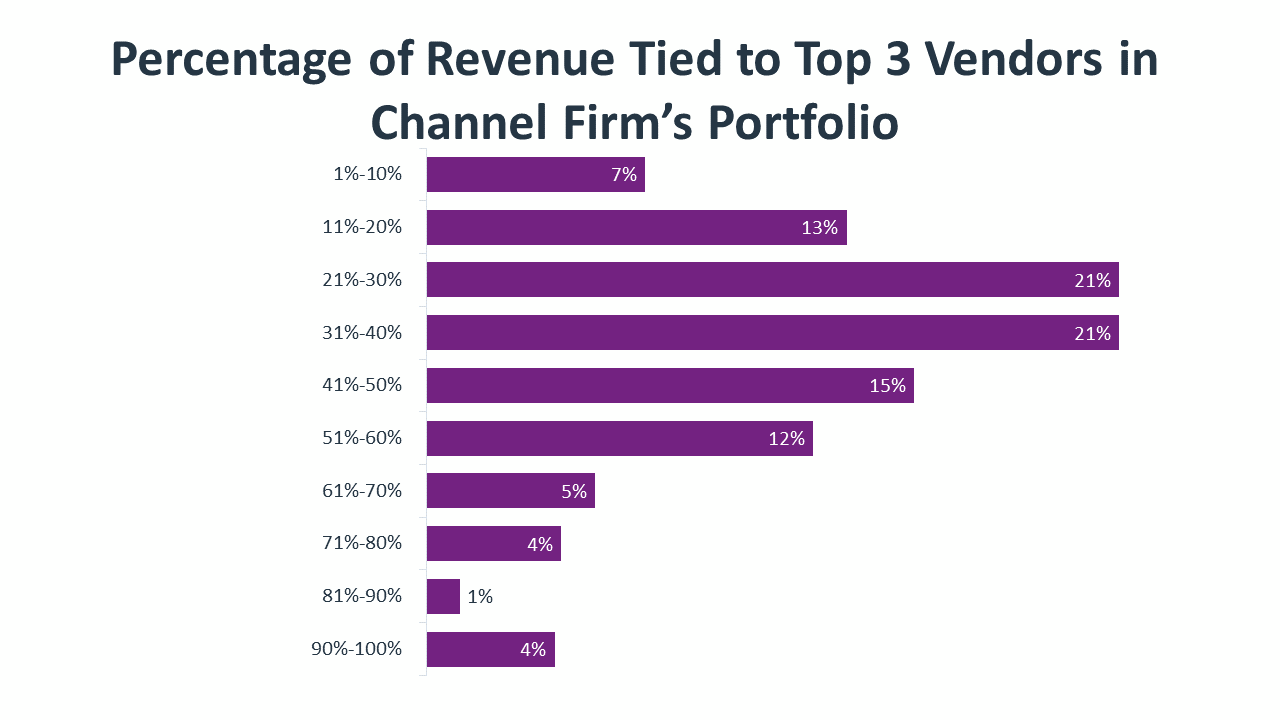
Read more about Managed Services, Industry Trends.

 Download Full PDF
Download Full PDF